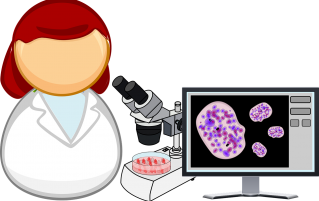

Microscopes have been around for hundreds of years, with the earliest known as “flea glasses” because they were used to observe insects. In 1997, a tiny replica guitar carved from a block of silicon was made in New York It measured just ten micrometres long. This is only a twentieth of the thickness of human hair. Each of its six strings were 0.05 micrometres thick, equivalent to 100 atoms laid end to end. Although it was so small you would need a microscope to see it, the strings would vibrate when plucked, producing very high frequency sounds. The frequency produced was 1,000 times higher than the human ear could recognise. An atomic force microscope was needed to pluck the strings, which were around 50 nanometres wide. The whole guitar is about the size of a human blood cell!!
GCSE scientists – you need to understand how to use a microscope. For help with this try our new guide “How to work with Microscopes”. In this guide is an explanation of how to use microscopes as well as how to calculate magnification. There is also information on the difference between electron and light microscopes. It includes questions to try, and answers to check your understanding.
Click on the picture below to see the guide.
If you found this useful and think you would benefit from some additional help, please contact us.
